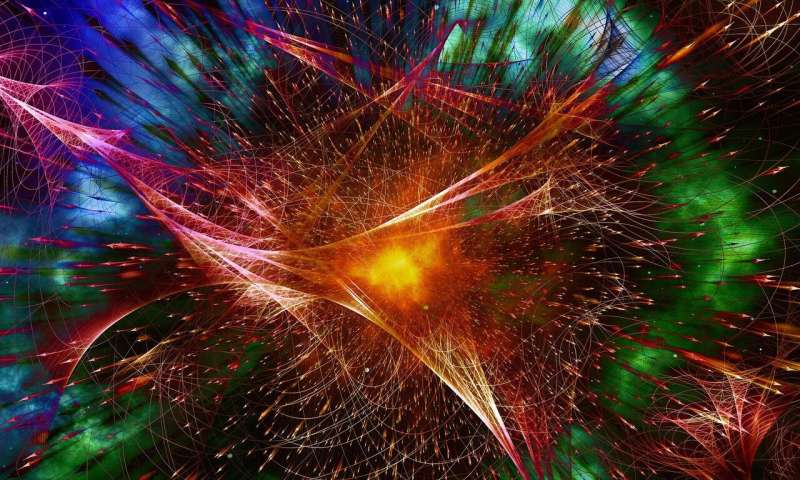
On the big screen, in video games and in our imaginations, lightsabers flare and catch when they clash together. In reality, as in a laser light show, the beams of light go through each other, creating spiderweb patterns. That clashing, or interference, happens only in fiction—and in places with enormous magnetic and electric fields, which happens in nature only near massive objects such as neutron stars. Here, the strong magnetic or electric field reveals that a vacuum isn't truly a void. Instead, when light beams intersect here, they scatter into rainbows. A weak version of this effect has been observed in modern particle accelerators, but it is completely absent from our daily lives or even normal laboratory environments.
Yuli Lyanda-Geller, professor of physics and astronomy in the College of Science at Purdue University, in collaboration with Aydin Keser and Oleg Sushkov from the University of New South Wales in Australia, applied quantum field theory nonperturbative methods used to describe high-energy particles and expanded them to analyze the behavior of so-called Dirac materials, which recently became the focus of interest. They used the expansion to obtain results that go both beyond known high-energy results and the general framework of condensed matter and materials physics.
They suggested various experimental configurations with applied electric and magnetic fields and analyzed best materials that would allow them to experimentally study this quantum electrodynamic effect in a nonaccelerator setting. They subsequently discovered that their results better explained some magnetic phenomena that had been observed and studied in earlier experiments.
Keser, Lyanda-Geller and Sushkov discovered that it is possible to produce this effect in a class of novel materials involving bismuth (its solid solutions with antimony and tantalum arsenide). With this knowledge, the effect can be studied, potentially leading to vastly more sensitive sensors as well as supercapacitors for energy storage that could be turned on and off by a controlled magnetic field.
"Most importantly, one of the deepest quantum mysteries in the universe can be tested and studied in a small laboratory experiment," Lyanda-Geller said. "With these materials, we can study effects of the universe. We can study what happens in neutron stars from our laboratories."
Yuli Lyanda-Geller is an expert in mesoscopic physics and interference phenomena, optical phenomena in nanostructures and the physics of quantum information, and the paper is available online in the Physical Review Letters.




No comments: